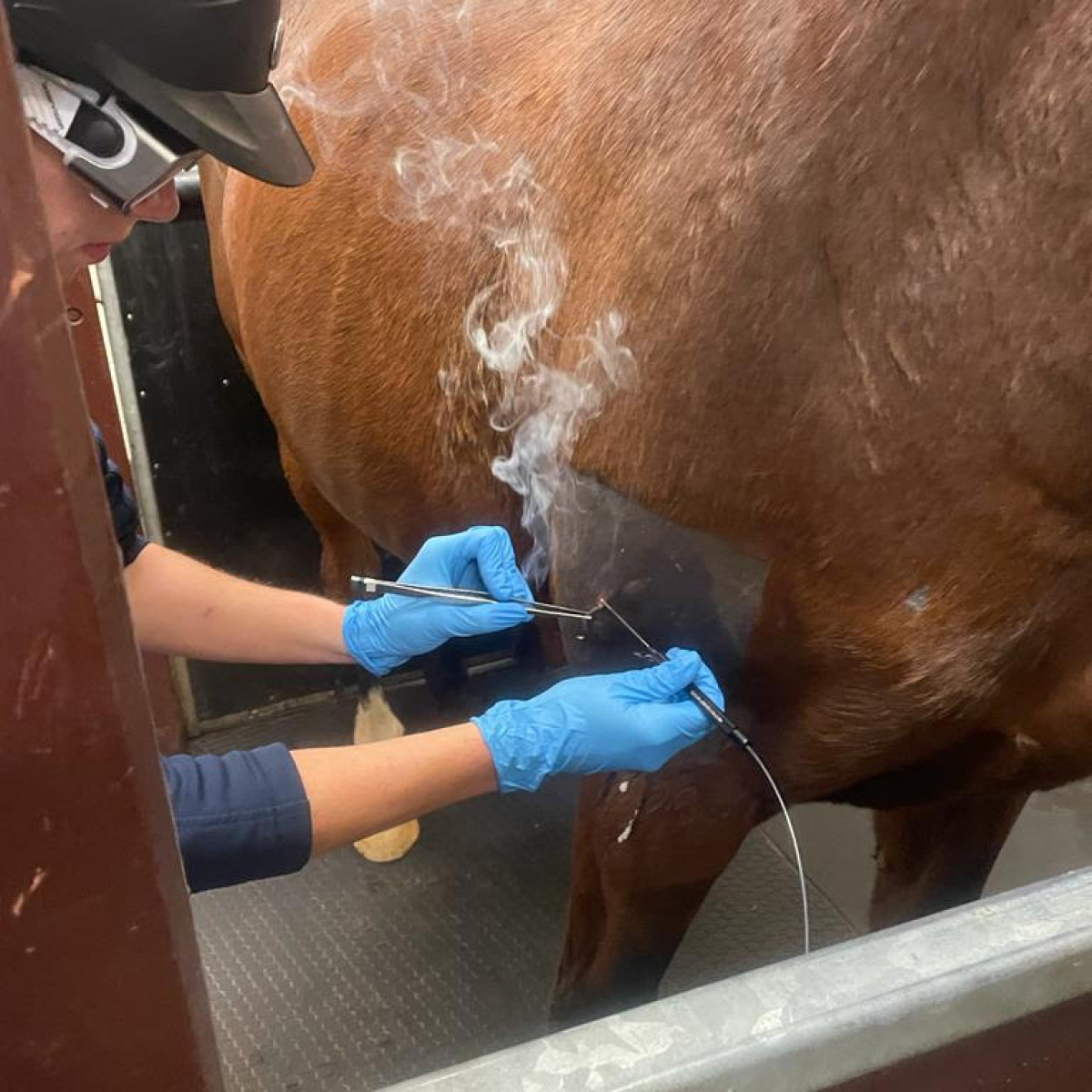Equine Therapy Programs: Changing Lives One Experience at a Time
Equine Therapy Programs: Changing Lives One Experience at a Time
Blog Article
Just How Laser Treatment in Horse Therapy Is Transforming Veterinary Look After Equines
Laser therapy has become a transformative approach in equine veterinary care, supplying a non-invasive solution that expedites recovery and improves overall health. Leveraging precise light wavelengths, this advanced treatment stimulates cellular regeneration, lowers inflammation, and reduces pain. Its efficiency expands from bone and joint injuries to chronic disorders like osteo arthritis, considerably improving flexibility and life high quality for steeds. The mobility and flexibility of laser therapy gadgets further underscore their growing indispensability among veterinarians. As we discover the detailed auto mechanics and real-world successes, the profound influence on equine clinical methods comes to be significantly apparent.
Recognizing Laser Treatment

The modern technology behind laser therapy is based in the concept of photochemistry, where photons are soaked up by chromophores within cells, resulting in raised ATP production and inflection of reactive oxygen varieties (Equine Therapy). This, subsequently, advertises cellular spreading, minimizes inflammation, and speeds up recovery. Vet practitioners use different kinds of lasers, including low-level lasers (LLLT) and high-power Class IV lasers, relying on the specific therapeutic purposes and the nature of the equine problem being dealt with
Various laser wavelengths and power settings are very carefully selected to target various tissue depths and attain wanted medical end results. Safety protocols are extremely important, as inappropriate use can cause thermal damages or suboptimal therapeutic effects. Thus, a comprehensive understanding of laser treatment's systems and applications is critical for its reliable implementation in equine veterinary method.
Benefits for Horse Health
The myriad benefits of laser therapy for equine health encompass improved healing, pain decrease, and enhanced mobility. This innovative therapy technique leverages certain wavelengths of light to pass through cells, promoting mobile function and promoting rapid tissue fixing. The non-invasive nature of laser treatment guarantees marginal anxiety and pain for the steed, promoting a smoother recuperation procedure.
Boosted recovery is among the leading benefits, as laser treatment increases mobile regrowth and collagen synthesis. This brings about quicker recuperation times from injuries and surgical treatments. Pain reduction is attained through the anti-inflammatory impacts of laser therapy, which lowers swelling and decreases the production of pain-inducing chemicals. As a result, steeds experience substantial alleviation from chronic and severe discomfort conditions.
By lowering swelling and pain, and enhancing tissue repair, laser treatment assists in restoring joint feature and muscular tissue versatility. Hence, laser treatment stands as a transformative tool in modern-day equine veterinary treatment.
Usual Problems Treated
Laser treatment has actually emerged as a functional treatment choice for a selection of typical equine problems. Additionally, laser treatment is reliable for look what i found problems like osteo arthritis, where it helps minimize joint inflammation and promote cells repair service.
Wound administration is another area where laser treatment has revealed considerable assurance. Chronic wounds or slow-healing abscess can be specifically tough in steeds, but laser therapy boosts cellular regeneration and improves blood flow, hence accelerating the healing procedure. In addition, laser treatments have actually been efficiently employed in taking care of hoof conditions such as laminitis and abscesses, alleviating pain and promoting faster healing.

Innovation Behind Laser Therapy
Beyond the myriad problems treatable with laser treatment, the innovation itself values better examination. At the heart of laser therapy is making use of specific wavelengths of light to permeate cells and elicit organic actions. These wavelengths, commonly ranging from 600 to 1000 nanometers, are uniquely soaked up by chromophores in the skin, muscle mass, and other tissues, instigating a waterfall of cellular events.
Laser tools utilized in veterinary medication typically make use of low-level laser treatment (LLLT) or cold laser treatment. Unlike high-powered surgical lasers, these tools run at reduced energy degrees, optimizing therapeutic benefits while decreasing look what i found thermal damages. The power from the laser light promotes adenosine triphosphate (ATP) production, enhances cellular metabolic process, and increases cells repair processes.

Success Stories and Study

Showcasing the concrete advantages of laser therapy, numerous success tales and study brighten its transformative effect on equine health and wellness. One such situation involves a thoroughbred racehorse suffering from chronic tendonitis. Conventional therapies produced very little enhancement, yet after integrating laser therapy right into the routine, the over at this website horse showed considerable decreases in inflammation and pain within weeks, inevitably returning to competitive racing.
One more compelling example includes a dressage equine detected with severe back discomfort, restricting its efficiency. A veterinary team used low-level laser treatment (LLLT) to target the irritated locations, causing marked enhancement in versatility and a significant reduction in discomfort. Over numerous sessions, the horse reclaimed its peak type, showcasing the effectiveness of laser treatment in addressing bone and joint issues.
In addition, a study performed at a leading equine center analyzed 50 steeds with numerous soft tissue injuries treated with laser therapy. The results were striking: 85% of the equines showed accelerated healing times and enhanced wheelchair. These situations highlight the flexibility and performance of laser treatment in equine medicine, supplying a non-invasive, scientifically-backed strategy to enhancing recovery and efficiency in equines.
Conclusion
Laser treatment is revolutionizing equine vet treatment by giving a non-invasive treatment that accelerates healing, minimizes inflammation, and minimizes discomfort. With its performance in treating a range of conditions, from musculoskeletal injuries to persistent disorders like osteoarthritis, this modern technology significantly enhances equine health and wellness and flexibility. The portability and versatility of laser therapy additionally highlight its transformative effect on vet practices, solidifying its role as a vital tool in modern-day equine healthcare.
Report this page